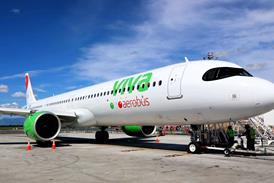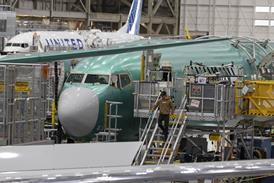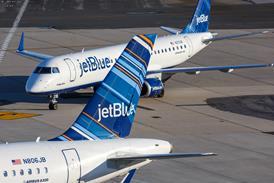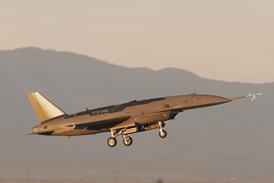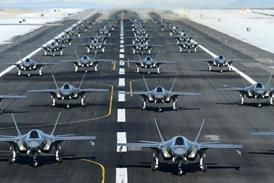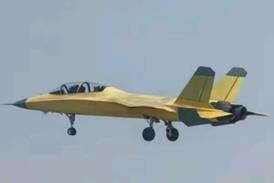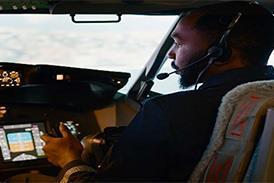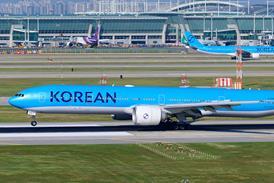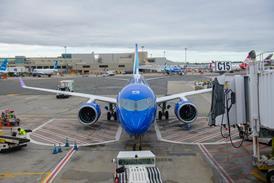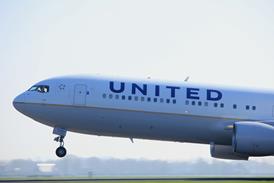Air India states it has found no issues with the fuel-control switch locking mechanisms on its Boeing 787 fleet, after inspections prompted by the crash at Ahmedabad last month.
Preliminary findings from the inquiry had noted a US Federal Aviation Administration safety bulletin from 2018 referring to the possibility that fuel-control switches had been installed on various models – including all 787 variants – with the locking feature disengaged.
This lock prevents the switches being inadvertently moved to the ‘cut-off’ position, which would halt the fuel-flow to the aircraft’s engines.
Given that the initial inquiry findings point to activation of both the left- and right-hand fuel switches, the status of the lock on the 787 involved in the 12 June accident has been a subject of uncertainty.
While investigators have yet to disclose details of the switch locks on the crashed aircraft, Air India has found “no issues” with the mechanism on remaining 787s – or the Boeing 737s of Air India Express – after completing precautionary inspections.
This reduces – although does not eliminate – the probability of inadvertent activation, as outlined in the FAA bulletin, given that it would require a highly-unusual slip on the only aircraft with a faulty switch.
The inspections mean the two carriers have complied with an Indian DGCA regulatory directive issued on 14 July.
“Air India remains committed to the safety of passengers and crew members,” says the airline.
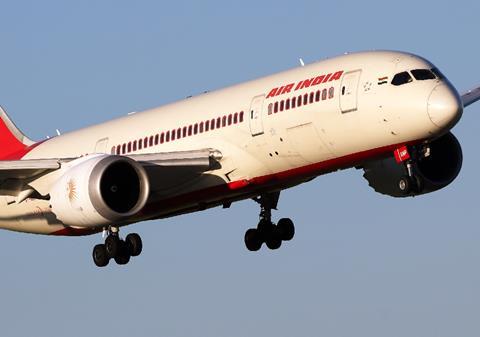
The Federation of Indian Pilots has rejected the possibility of the crew’s involvement, insisting that transitioning both switches sequentially to the ‘cut-off’ position within 1s – as the inquiry states – would be “humanly impossible”.
“Attributing such a catastrophic engine shutdown sequence to deliberate pilot action, while ignoring manufacturer-documented vulnerabilities, is unwarranted and unjust in the absence of incontrovertible evidence,” said the federation’s president, CS Randhawa, in a 16 July communication to the Indian ministry of civil aviation.
It argues that a potential software fault or sensor anomaly could “simulate pilot action” and trigger an automated engine shutdown.
The federation refers to the 787’s thrust-control malfunction accommodation (TCMA) system, which is designed to prevent uncommanded high-thrust activation while on the ground by reducing engine power.
Although the federation uses an All Nippon Airways 787’s dual-engine shutdown after touchdown at Osaka to justify its concerns, the protective system is designed to activate only on the ground, under specific circumstances, with checks on air-ground status, engine speed and thrust-lever position.
The ANA aircraft was also fitted with Rolls-Royce Trent 1000 engines, while the Air India 787 had GE Aerospace GEnx-1B powerplants.
Boeing discovered a logic error in the GEnx-1B version of the TCMA system prior to the ANA occurrence, mentioned in an FAA document of September 2016. This stated that Boeing planned to address the error – limited to a “certain single failure” – by the end of 2018, implementing it into production aircraft and issuing retrofit instructions.
While the Federation of Indian Pilots has offered little direct evidence that a software issue might have contributed to the Ahmedabad crash, it says the inquiry “must include all plausible failure paths” and avoid “premature attribution of motive or intent” until system malfunctions – including problems with the fuel-control switch locks – are “conclusively ruled out”.

